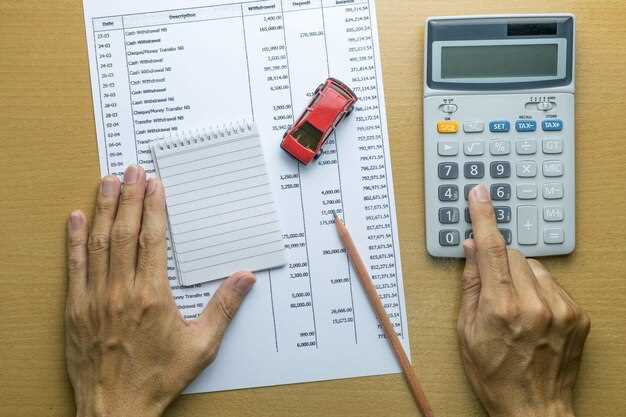
When it comes to purchasing a vehicle, understanding the difference between salvage and clean titles is crucial for making an informed decision. The title of a car not only reflects its history but also significantly impacts its price. A clean title indicates that the vehicle has not been severely damaged or declared a total loss, which generally results in a higher market value. In contrast, vehicles with salvage titles have undergone substantial damage and have been rebuilt, leading to a decrease in perceived worth.
The impact of a title on the overall price of a vehicle can be substantial. Cars with clean titles tend to fetch premium prices because buyers often view them as more reliable and trustworthy. Conversely, salvage title cars typically come at a lower price point, making them an attractive option for budget-conscious consumers. However, potential buyers must weigh the risks involved, as salvage vehicles may come with hidden issues that could lead to costly repairs down the line.
In this article, we will explore the differences in pricing between salvage and clean title cars, examining factors that influence these prices and what buyers should expect. By understanding these key differences, prospective car owners can make better financial decisions and avoid potential pitfalls when entering the used car market.
Salvage vs Clean Title Car Prices: What to Expect

When considering purchasing a vehicle, understanding the differences in prices between salvage and clean title cars is essential. A clean title vehicle typically commands a higher price due to its reliable history and condition. Buyers are generally more confident in clean title cars, leading to increased demand and thus higher market values.
In contrast, salvage title vehicles, which have been deemed a total loss by insurance companies, usually reflect significantly lower prices. The price gap between salvage and clean titles can be substantial, often reaching 20% to 50% lower compared to their clean title counterparts. This discrepancy arises from the perceived risk and potential future repair costs associated with salvage cars.
Prospective buyers should weigh the cost savings of a salvage title car against potential hidden issues that may arise. While they can be a budget-friendly option, thorough inspections and background checks are vital to assess the true condition and history of these vehicles. Understanding this price gap helps buyers make informed decisions based on their financial situation and willingness to undertake potential repairs.
Understanding Salvage Titles: Costs and Risks
A salvage title indicates that a vehicle has been significantly damaged and declared a total loss by an insurance company. This designation typically arises from accidents, flooding, or other substantial impairments. As a result, vehicles with salvage titles can attract considerably lower prices in the market compared to clean title counterparts, often creating a wide gap in pricing.
When considering purchasing a salvage title vehicle, it is crucial to assess the costs involved beyond the initial price. Restoration and repair expenses can add up quickly. Even if the purchase price seems attractive, hidden damages or required renovations may lead to significant financial burdens. Understanding the vehicle’s history is imperative to evaluate potential future costs accurately.
Additionally, vehicles with salvage titles carry inherent risks. Insurance companies may offer limited coverage, or none at all, which can lead to unforeseen expenses during an accident or when trying to sell the vehicle. Many lenders are hesitant to finance salvage title cars due to their depreciated value, affecting potential resale and liquidity.
In conclusion, while salvage title vehicles can present opportunities for savings, potential buyers must thoroughly research and understand the implications of such a title. Weighing the cost against the associated risks is essential to make an informed decision, ensuring you do not overlook critical factors in your purchase.
Price Differences: Salvage vs Clean Title Vehicles
The title of a vehicle significantly impacts its market price. A clean title indicates that the car has not experienced major accidents, floods, or severe structural damage, which instills confidence in potential buyers. Consequently, clean title vehicles generally command higher prices in the market compared to their salvage counterparts. Buyers are often willing to pay a premium for the assurance of reliability and safety that a clean title offers.
On the other hand, salvage title cars are typically priced lower due to their history of extensive damage or loss. These vehicles may have been declared a total loss by insurance companies, which diminishes their perceived value. When purchasing a salvage title car, buyers should expect a significant discount – often ranging from 20% to 50% less than similar clean title vehicles. This price difference reflects the risks associated with ownership, including potential repair costs and resale challenges.
It’s essential for potential buyers to evaluate the impact of the title on their specific purchase. Salvage title vehicles might seem appealing due to their lower price; however, the long-term financial implications can outweigh any initial savings. Understanding these price differences enables consumers to make informed decisions based on their budget, risk tolerance, and future vehicle plans.
Factors Affecting Resale Value of Salvage Cars

The resale value of salvage cars is influenced by several key factors. Understanding these elements can help both buyers and sellers make informed decisions regarding price and future investments.
- Title Brand: The title brand has a significant impact on the perceived value of a salvage vehicle. Cars with less severe title branding, such as “rebuilt” or “reconstructed,” generally fetch higher prices than those labeled as “salvage” or “junk.”
- Extent of Damage: The type and extent of damage incurred prior to the salvage title affect the car’s resale price. Vehicles that sustained minimal damage or have been restored to like-new condition tend to command higher prices than those with extensive repairs or hidden issues.
- Vehicle History: A detailed history report can influence the resale value. Buyers are more inclined to pay a higher price if there’s a documented history of repairs and maintenance that shows the vehicle is safe and reliable.
- Market Demand: The demand for specific makes and models plays a crucial role in determining price. Popular models with salvage titles can retain a respectable resale value due to high demand, while lesser-known or unpopular models may not.
- Repair Quality: The quality of repairs performed on a salvage car greatly impacts its resale value. High-quality, professional repairs can increase buyer confidence and lead to a better price, while subpar repairs can significantly decrease it.
- Geographic Location: The region in which the vehicle is sold can affect its resale price. Areas with higher demand for salvage vehicles may yield better prices than regions where buyers are wary of damaged cars.
- Age and Mileage: Older vehicles with higher mileage typically have lower resale values. However, well-maintained older models may still attract buyers willing to pay a reasonable price despite being labeled as salvage.
In conclusion, assessing the resale value of salvage cars requires consideration of various factors, including title type, repair quality, market demand, and vehicle history. Each of these elements contributes to establishing a fair and competitive price in the salvage car market.
